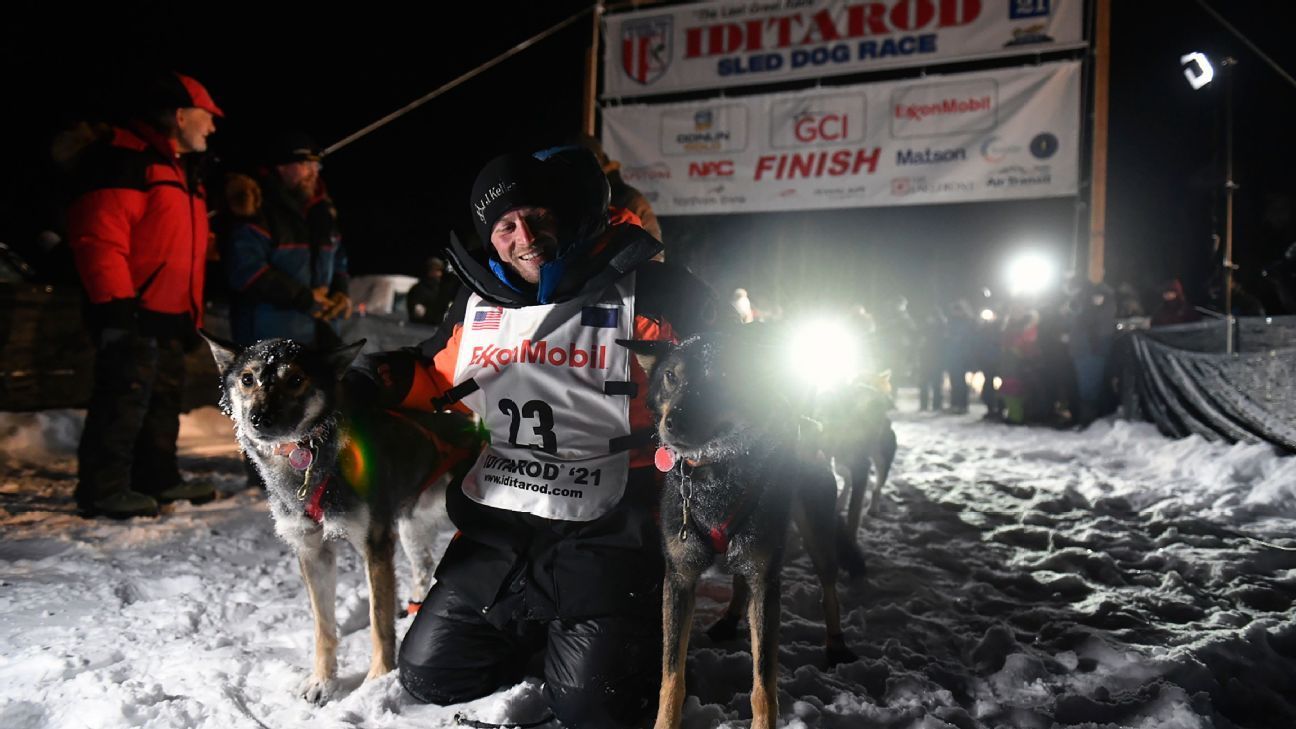ANCHORAGE, Alaska – Iditarod officials on Wednesday imposed a two-hour penalty on musher Dallas Seavey for failing to properly gut the moose he killed during the race earlier this week.
Race Marshal Warren Palfrey convened a panel of three race officials to investigate the circumstances surrounding the death of the moose, which became tangled with Seavey and his dog team early Monday morning, about 12 hours after the race officially began. one day race. One dog was injured in the encounter and was flown back to Anchorage for care.
If a musher kills a big game animal such as a moose, caribou or buffalo in defense of life or property during the race, the rules require him to gut the animal and report it to officials at the next checkpoint.
Seavey, a five-time Iditarod champion, encountered the moose shortly after leaving the checkpoint in Skwentna. He used a gun to shoot and kill him about 14 miles (22 kilometers) from the village at 1:32 a.m. Monday.
According to the panel's findings, Seavey spent about 10 minutes at the kill site and then took his dog team about 11 miles (18 kilometers) before setting up camp for a three-hour layover.
The team then departed at 5:55 a.m. for the next checkpoint and arrived at Finger Lake at 8 a.m., where Seavey reported the death.
“It fell on my sled; it was lying in the road,” Seavey told an Iditarod Insider television crew at the Finger Lake checkpoint, where he urged race officials to move the moose off the road.
“I gutted it the best I could, but it was ugly,” he said.
A statement from the Iditarod said that “it had been determined that the musher did not sufficiently gut the animal.” By definition, disembowelling includes removing the intestines and other internal organs, officials said.
The Iditarod can impose time penalties if a majority of the three-person panel agrees that a rule was broken and a competitive advantage was gained. Penalties can vary up to a maximum of eight hours per violation.
Time penalties can be added to the mandatory stops each musher must make during the race or to a musher's final time after arriving in Nome.
Officials said the two-hour penalty will be in addition to Seavey's mandatory 24-hour layover.
The moose was recovered and its meat was rescued and processed. Iditarod associates in Skwentna were distributing the food.
Seavey was leading the Iditarod on Wednesday, the first musher to leave the checkpoint in the ghost mining town of Ophir, about 350 miles (563 kilometers) into the race after staying just 15 minutes. Musher Jessie Holmes arrived at Ophir first, almost two hours before Seavey, but appeared to be resting. Four other drivers were also in Ofir.
The starting ceremony was held Saturday in Anchorage, and competitive starting began Sunday.
This year's race features 38 mushers, who will travel approximately 1,609 kilometers (1,000 miles) across two mountain ranges, the frozen Yukon River and along the ice-covered Bering Sea. About 10 days after departure, they will come off the ice and head to Main Street in the old gold rush town of Nome for the final push toward the finish line.












